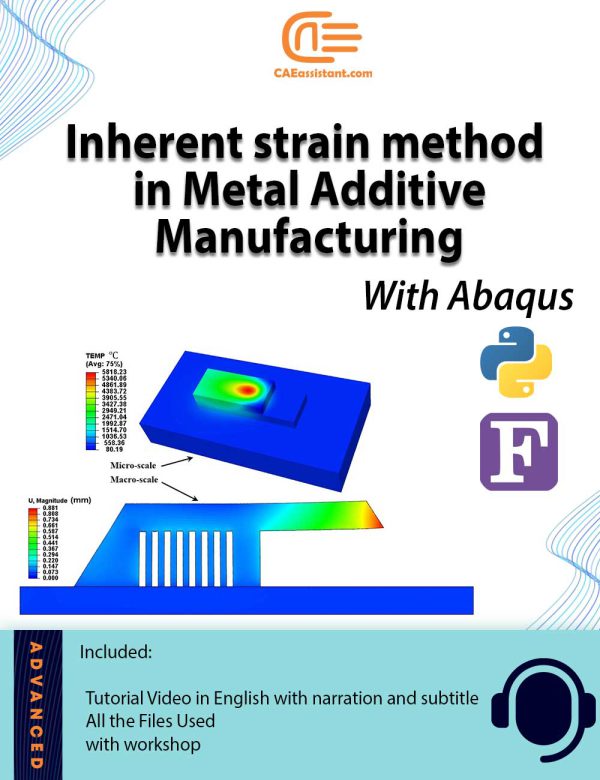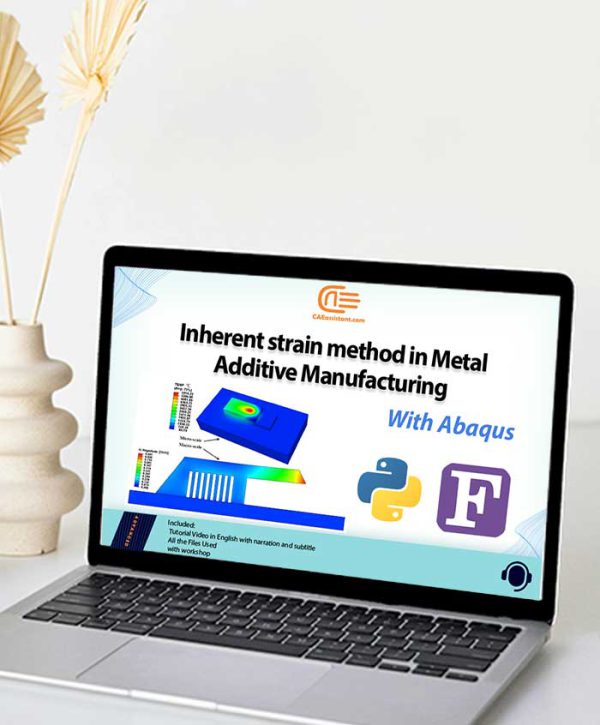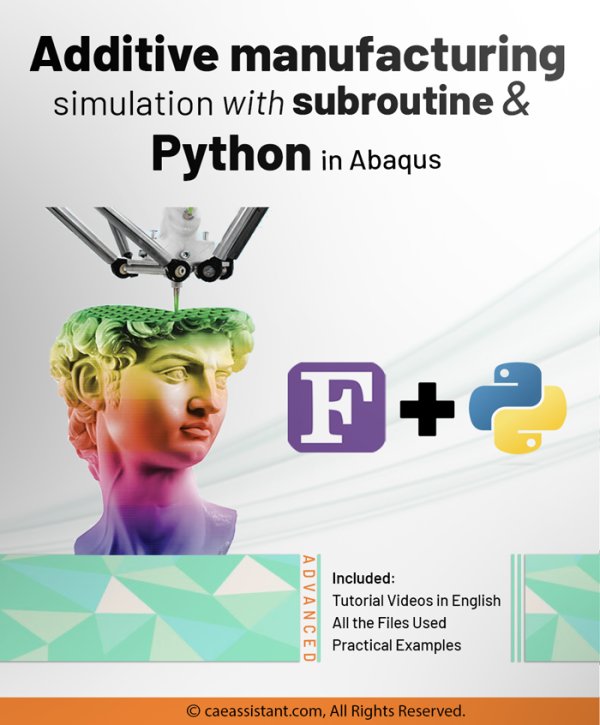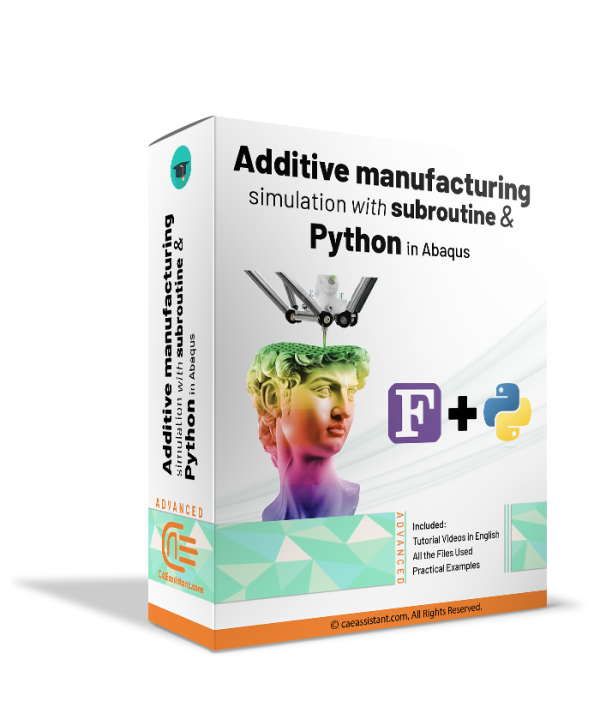Hossein Mohammadtaheri
Inherent strain method in Metal Additive Manufacturing simulation (using subroutines and Python scripting in Abaqus)
This tutorial package focuses on the Inherent Strain method in Abaqus, an efficient numerical approach to simulate Laser Powder Bed Fusion (LPBF) in metal additive manufacturing.
It addresses the high computational cost of detailed thermo-mechanical LPBF simulations by utilizing an agglomeration approach to transfer inherent strain from micro to macro-scale models. Through theoretical explanations and practical workshops, users will learn to implement the ISM method, including Dflux and USDFLD subroutine coding and Python scripting, for improved LPBF process simulation control. This product does not utilize AM plugins, making it ideal for users who prioritize transparency in calculation methods and flexibility in variable modification for similar models.Additive manufacturing simulation with Abaqus subroutine & python | Inherent Strain Method
3D printing is a technique for creating three-dimensional objects by layering materials such as plastic or metal based on a digital design. 3D printing simulation involves the use of software to predict and enhance the printing process, resulting in more efficient and precise production. This training package is based on the use of subroutines and Python scripting. Following an introduction to the 3D printing process, this method with all its details is explained. Two workshops are then conducted for this method. The first workshop covers 3D printing simulation of a gear with a uniform cross-section, while the second workshop covers a shaft with a non-uniform cross-section.




